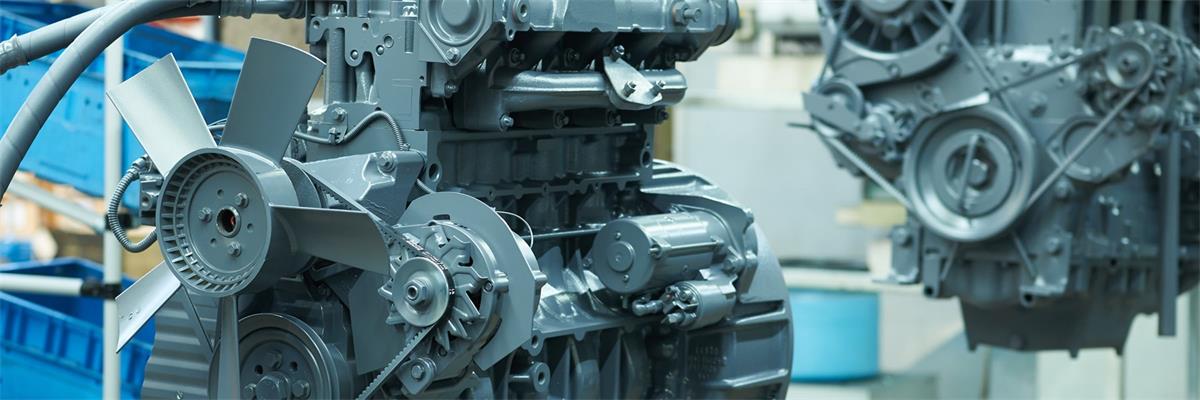
Troubleshooting of insufficient diesel engine power
It is inevitable that a diesel engine will encounter insufficient power during operation. When encountering such a situation, do not panic and use the deletion method to judge one by one. The following points are some methods for checking its insufficient power for reference.
(1) Check for smoke and wear
When the engine is running, open the oil cover. If there are streams of thick smoke coming out of the oil cover, it is called smoke. If the smoke is serious, it means that the piston, cylinder liner, piston ring and other parts are seriously worn.
Open the valve chamber cover. If there is a trace of cyan or white smoke coming out from the root of the valve (valve working surface), it is called smoke. If the smoke is serious, it means that the valve or valve seat is seriously worn or ablated, or the valve clearance Too small or even no gap. By observing the smoke situation, you can directly see which valve and cylinder are leaking and should be repaired in time.
(2) Check carbon deposits and working conditions
The carbon deposits at the exhaust port of the diesel engine are black and gray, and the surface seems to be covered with a layer of hoarfrost. The carbon deposit layer is extremely thin, indicating that the diesel engine is in good condition. If the carbon deposit is black and bright but not wet, it means that the diesel engine is slightly burning oil and should be removed in time. If the thickness of the carbon deposit at the exhaust port of a certain cylinder is significantly higher than that of other cylinder exhaust ports, it means that the injector of this cylinder is not working properly or the cylinder sealing is poor. If the exhaust port of each cylinder is deteriorated, it should be repaired or replaced; if some exhaust ports are wet or oily, it means that the cylinder discharges a large amount of oil and should be repaired; if the carbon deposits on the exhaust ports of each cylinder are thicker and darker, there are many reasons. The working temperature is too low, or the fuel injection is too late, resulting in serious diesel afterburning. It should be used correctly and adjusted in time.
(3) Check the water temperature and cooling system
If the cooling system water temperature is too high (over 100°C) when the engine is running, it may indicate that the scale in the engine cooling water cavity is too thick or the cooling system components (thermostat, water pump, fan, etc.) are inefficient or ineffective.
(4) Check the valve timing and valve phase
After the engine has been operating for a long time, the timing gear, cam surface, follower column and tappet will wear, which will delay the opening and closing time of the intake valve and exhaust valve and deviate from the optimal valve phase, reducing the charging efficiency. Engine power decreases. Therefore, the engine valve timing should be checked regularly, and if it does not meet the requirements, it should be adjusted in time.
(5) Check the fuel injection and jamming
The fuel injection pump should not deflect or drip oil, the oil mist should be uniform, and the range should be appropriate. A crisp "plop, plop" sound can be heard when working, and the high-pressure oil pipe should feel pulsating when touched with your hand. Good fuel injection does not completely mean that there are no problems with the oil circuit parts. Therefore, it is also necessary to check whether the oil supply tie rod and shift fork are stuck or loose.
(6) Check the ignition and morning and evening
Checking the ignition refers to checking whether the fuel injection is timing, that is, whether the fuel supply advance angle meets the regulations. If the fuel supply is too late (the advance angle is too small), the diesel engine will have difficulty starting, the combustion will be incomplete, the exhaust will smoke, the engine temperature will be too high, and the power will be insufficient; if the fuel supply is too early (the advance angle is too large), the diesel engine will have knocks during operation. Knocking sound, easily damaged parts, easy to reverse when starting, and also affected. to engine power.
(7) Check the compression force and check for air leakage
Reasons for poor cylinder sealing: no valve clearance or too small clearance, excessive clearance between the piston and the cylinder liner and piston ring end face, carbon deposits in the ring groove, etc. When the engine is running, if you hear a "hissing" blowing sound close to the air filter, it means that the air leakage is related to the valve. At this time, the cause of the fault can be confirmed based on the smoke situation.
(8) Look at the smoke and check the color of the smoke
When the engine is working normally, it generally emits no smoke or some light gray-white smoke, which is sometimes difficult to see with the naked eye. If black smoke is emitted, it means that there is too much oil in the cylinder and there is insufficient air, and the combustion is incomplete; if blue smoke is emitted, it means that the wear gaps between the cylinder liner and piston, valves and valve guides are too large; if white smoke is emitted, it means that the fuel is mixed with water or the diesel is not completely burned and emerges from the exhaust pipe after vaporization.






